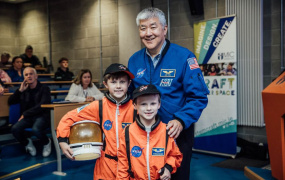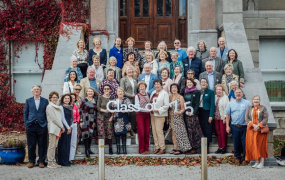Video Analysis to Promote Innovative Pedagogical Approaches in the Context of Múineadh na Gaeilge
Video Analysis as an Innovative Pedagogical Approach
| Lecturer - Dr Conchúr Ó Brolcháin |
|---|
| Discipline - Language and Literacy Education |
| Subject - Múineadh na Gaeilge |
| Level - Undergraduate |
| Class Size - 60 |
| Mode of Delivery - In-person |
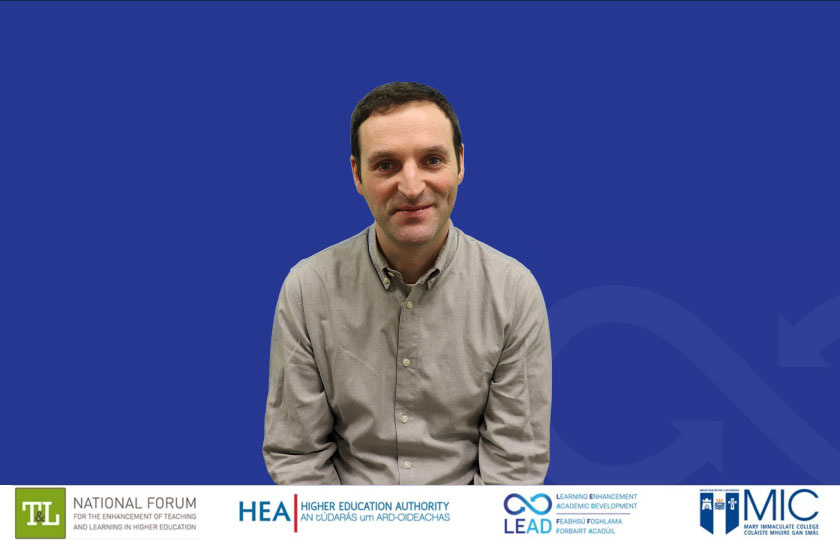
In this case study, Dr Conchúr Ó Brolcháin outlines how he designed activities during his lectures to enable students to observe video content involving professional teachers engaged in effective language pedagogy with primary school pupils and to use a pre-designed Video Analysis Document (VAD) to record detailed notes on these observations. This content was viewed on the lecture room interactive white board but was made available on the institutional Virtual Learning Environment (VLE) for anyone who wished to access on personal devices. Afterwards, students engaged in discussion and collaborative analysis about key pedagogical approaches in which they made connections with theoretical concepts in second language acquisition and also with their own pedagogical practices (past, present and potential future).
Rationale
One major challenge of teaching students in Initial Teacher Education (ITE) around Múineadh the Gaeilge (Irish language pedagogy) centres on bridging the gap between language acquisition theory on the one hand with “real world” teaching and learning on the other. Although peer-teaching and microteaching workshops afford an excellent opportunity to explore elements of second language pedagogy, students can sometimes struggle to imagine how an effective Irish lesson might play out with actual children in a real world context. Video analysis provides an opportunity to showcase and analyse innovative and effective teaching practices and to develop a deeper understanding of language acquisition theory, taking account of the considerable complexities of teaching a minoritized language in the context of a multilingual Ireland. This approach also encourages students to consider the language being taught to pupils along with the language needed by the teacher during the lesson.
Description of the Teaching and Learning Approach
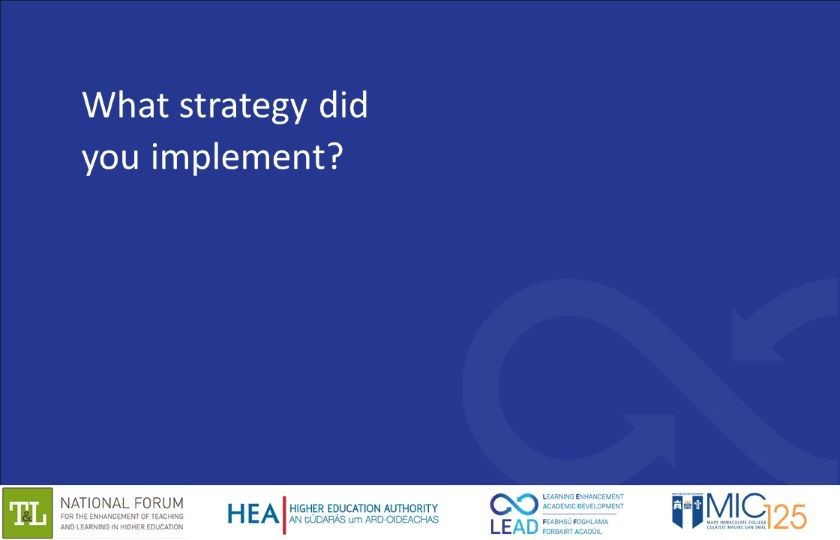
My sense of working with initial teacher education students for over 15 years is that video content on social media constitutes a significant part of their engagement with the wider world and so it made sense to leverage this medium for pedagogical purposes. Students’ fondness for consuming video content in the area of second language acquisition generally and Múineadh na Gaeilge more specifically began to emerge in earlier student evaluation surveys in which this means of presenting material this way was striking a chord with students. In the 2019/20 Student Evaluation of Teaching for example over 80% of students (n=400) felt that the video analysis sessions were beneficial or very beneficial and qualitative comments were overwhelmingly positive about their impact in exhibiting complex pedagogical practices. In a student survey at the beginning of this term (Autumn 2024) over 90% of students indicated that they would benefit from additional video content to help support more traditional approaches such as PowerPoint and academic reading lists.
I usually incorporate between 3 and 4 video analysis sessions over the course of a 12 week term of Múineadh na Gaeilge. These sessions would usually last for 15-20 minutes of a lecture (33-40% of lecture time) in which students would be shown a video of a primary school teacher engaging in teaching a strand of the Gaeilge language curriculum (reading, writing or oral language). Videos are available from the Primary Language Curriculum on the linked website of Ireland's National Council for Curriculum and Assessment (NCCA). Students are then prompted, with the aid of a Video Analysis Worksheet (see examples below in Appendices) to analyse aspects of the teacher’s approach in small groups. Students are scaffolded towards considering teaching strategies, learning styles of pupils, activities suitable for the different periods of a lesson, the language being taught to pupils and the language needed by the teacher to manage a lesson entirely through the target language. Strengths and potential for improvements are explored along with a consideration of how these pedagogical approaches watched might be appropriate, or not, to the types of teaching contexts that they are themselves familiar with.
What Worked and Why?
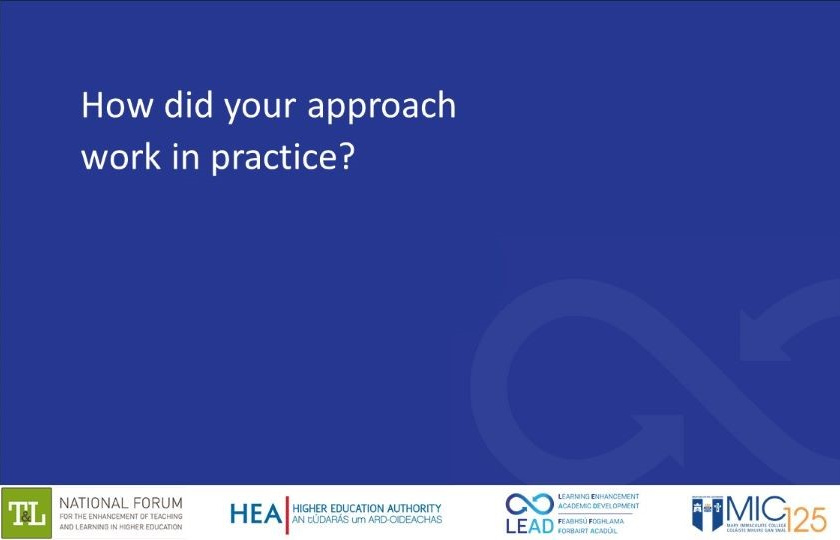
Teaching a second language to second or even third language pupils is a complex undertaking, even for the most qualified and experienced teachers. Showing effective pedagogical approaches and methods allows ITE students to reflect upon the journey ahead of them in which they begin to imagine a future as an effective second language teacher and also in which they are encouraged to identify areas in their own competence that may need to be improved. The effectiveness of this approach is built upon 3 separate phases:
- Individual Work: Filling in the Analysis Template. This could be done by hand or on a laptop as the video and template were made available on Moodle. It also allowed students to revise the content in their own time and/or to engage with video analysis if they were absent from the lecture. Using language prompts throughout the Video Analysis Document ensured that students wouldn’t lose track of where they were.
- Paired Work: 5 minutes to collaborate with a partner. This additional step, added after many sessions, allowed students to flesh out some of their ideas and fill in any blanks in the knowledge with a trusted peer.
- Group Discussion & Feedback afterwards: This allowed us to create our own understanding of the video content as a group, identifying key messages and making relevant connections to contemporary classrooms.
Any problems or issues that arose from this approach?
The success of the video analysis session depends on a number of factors:
- The technical quality of the video: It is important that the quality of both the sound and picture are perfect as content of a lower standard will not be appreciated.
- The Video Analysis Worksheet is an important tool to scaffold the observations and so considerable thought and time is needed here to ensure that students are making sense of the video in a coherent, relevant and worthwhile way.
- The discussion steps after the video analysis are crucial to extracting as much knowledge and insight from the video content. Moving from individual work to think-pair-share to a group discussion is valuable as it enables everyone to benefit from the in-depth analysis and sharing of information.
Tips for Implementation
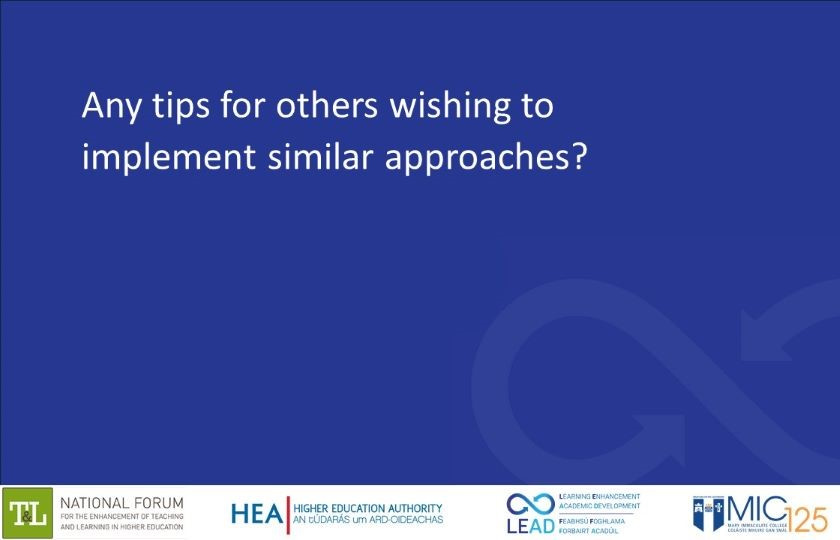
It is very important for the teacher to watch and analyse the video content comprehensively, on numerous occasions in order to make the most of the video analysis approach. Detailed notes should be taken at key points in order to be able to structure and guide the post-video discussion and group analysis. The analysis sheet is crucial to getting students to actually pause and think about each individual pedagogical method or approach. Putting time markers along the left hand side of the video analysis template may help prompt student around detailing aspects of what they are seeing. The inclusion of prompt questions throughout the task helps to refocus their efforts e.g: what is the teacher doing here? What are the pupils doing?
There is a need for more modern up to date video content of teachers (in initial teacher education and qualified) teaching actual Irish lessons to children in “real world” contexts. Some of the video being used by the NCCA is very good but there are a number of issues with some of the content:
- Videos are highly edited and appear to be produced over a number of “takes”. This gives a sense that classroom practices are more performative and less real as a result.
- A lot of content focuses on the L1 context in which children would generally have a very good level of comprehension through Irish. There is a need for content in L2 contexts in which pupils might struggle with comprehension.
- I would like to record students’ observations and feedback in a more structured way and use them as a learning tool both in lectures and in the Virtual Learning Environment. This could be done by using Mentimeter and casting responses to the Interactive whiteboard to prompt further discussion around language pedagogy in the classroom.
NCCA 2024. Video Examples of Children’s Learning from Primary language Toolkit - available on the NCCA website here.
- Video Analysis as an Innovative Pedagogical Approach





